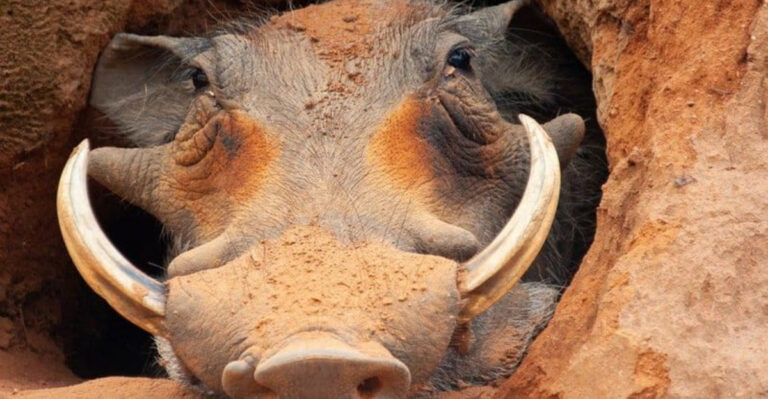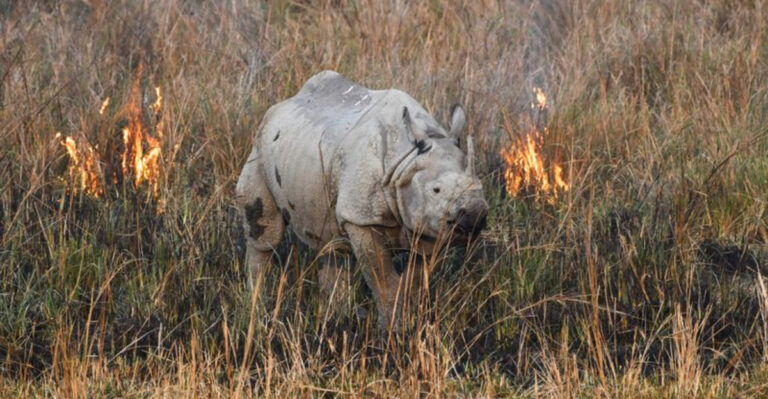These Are The Smallest Snakes Ever Spotted In The U.S.
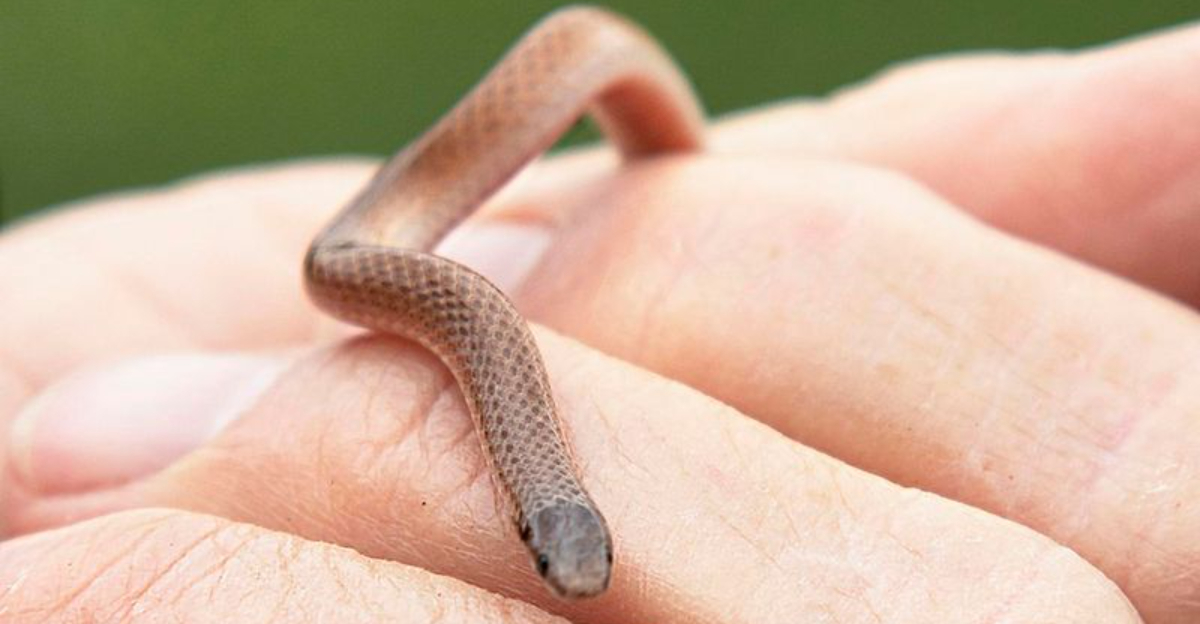
The United States is home to some truly fascinating wildlife, and among its residents are some of the tiniest snakes you can imagine. These serpents are as intriguing as they are petite, often going unnoticed due to their minuscule size.
From the shimmering scales of the Eastern Wormsnake to the delicate form of the Threadsnake, each of these tiny marvels has its own unique charm.
Let’s embark on a thrilling journey through the world of the smallest snakes ever spotted across the U.S., where every twist and turn reveals a new and delightful surprise!
1. Eastern Wormsnake
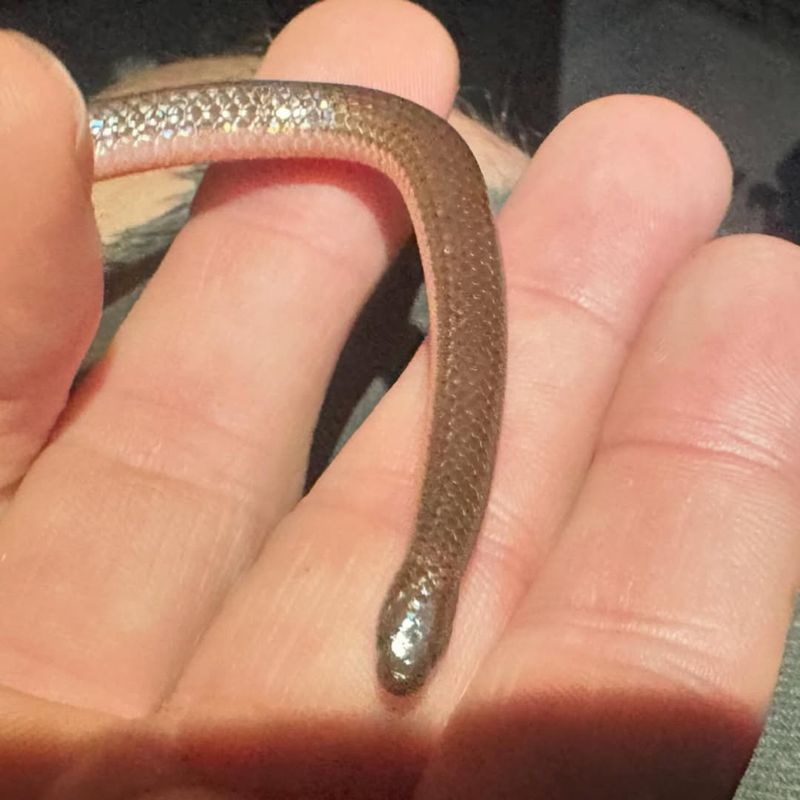
Nestled within the dense leaf litter of Eastern U.S. forests, the Eastern Wormsnake often goes unnoticed due to its diminutive size and worm-like appearance. With its glossy brown scales, this snake resembles more of a shiny earthworm than a predator. Its non-confrontational nature makes it a gentle, if elusive, forest inhabitant.
Measuring in at an average length of 7 to 11 inches, the Eastern Wormsnake is a master of camouflage, burrowing into the soil to escape the notice of both predators and curious onlookers. These snakes feed primarily on soft-bodied insects and earthworms, using their pointed heads to dig into moist earth.
Their secretive lifestyle means sightings are rare, making each encounter a thrilling surprise for herpetologists and nature enthusiasts alike. While they may lack the grandeur of their larger cousins, these snakes possess a charm all their own, quietly thriving in their subterranean world. Discovering one is akin to finding a hidden treasure in the forest, a subtle reminder of the intricate beauty that lies beneath our feet.
2. Florida Threadsnake
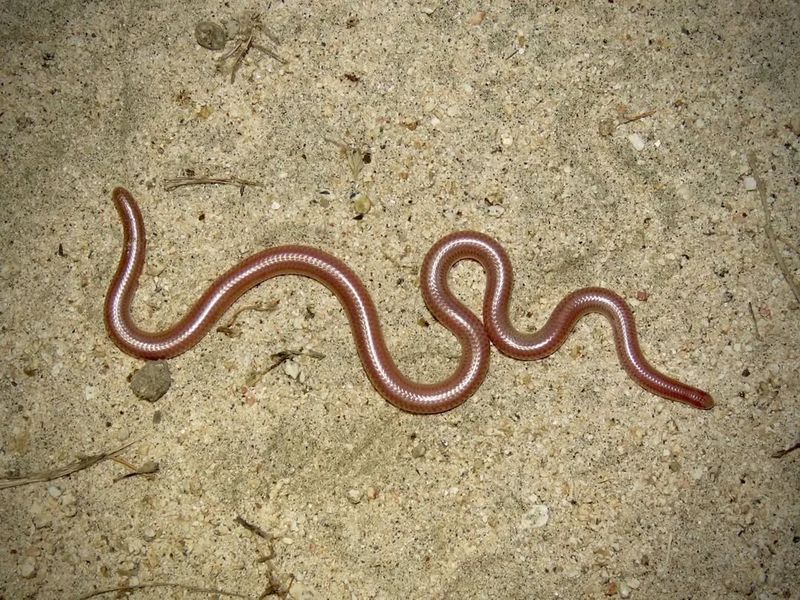
The Florida Threadsnake is a minuscule wonder, often mistaken for a worm thanks to its slender, pinkish body. Typically reaching only about 4 to 6 inches in length, this snake is one of the smallest serpent species in the world. Its resemblance to a piece of thread or a spaghetti strand is uncanny, making it a fascinating creature to behold.
These snakes are primarily fossorial, spending most of their time burrowed underground in sandy or loose soils. This subterranean lifestyle allows them to thrive on a diet of ants and termites, leveraging their tiny size to infiltrate nests undetected.
Despite their small stature, Florida Threadsnakes play a significant role in their ecosystem, controlling insect populations and maintaining the balance within their sandy habitats. Spotting one requires a keen eye and a bit of luck, as their secretive nature often keeps them hidden from view. Their petite form and unique lifestyle make them a captivating subject for anyone interested in the diversity of life beneath the surface.
3. Texas Blind Snake
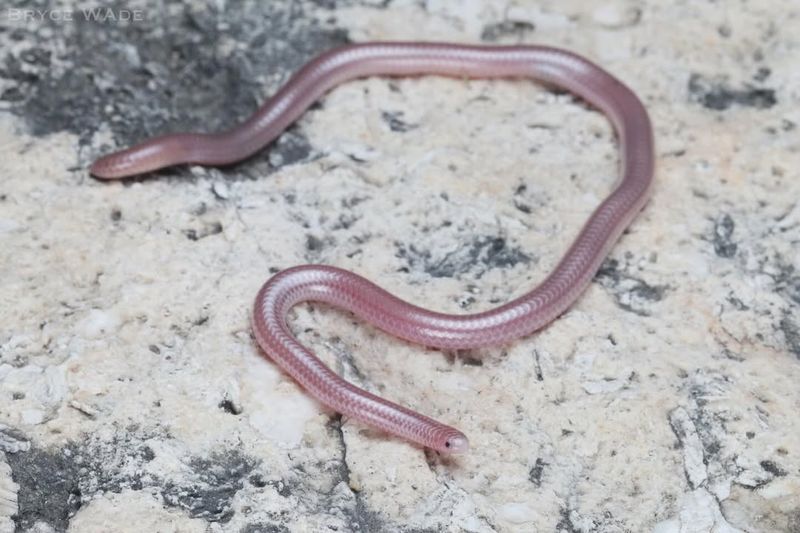
The Texas Blind Snake is a veritable Houdini of the snake world, often mistaken for an earthworm due to its small, shiny, pink body. Averaging a modest 3 to 13 inches in length, this snake is a master of disguise, seamlessly blending into the Texan landscape.
These snakes are blind, with their tiny eyes covered by translucent scales, rendering them nearly invisible against the rocky terrains they inhabit. Their primary diet consists of ants and termites, which they hunt using a keen sense of smell rather than sight, navigating the darkness with remarkable efficiency.
Their small size and fossorial habits make them elusive, often rendering them a mere whisper on the breeze of herpetological studies. The Texas Blind Snake embodies the art of subtlety, a creature that thrives unnoticed and unbothered, living out its quiet existence beneath the feet of an often oblivious world. Observing one in its natural habitat is a rare treat, a glimpse into a hidden realm where the smallest creatures reign supreme.
4. Western Ground Snake
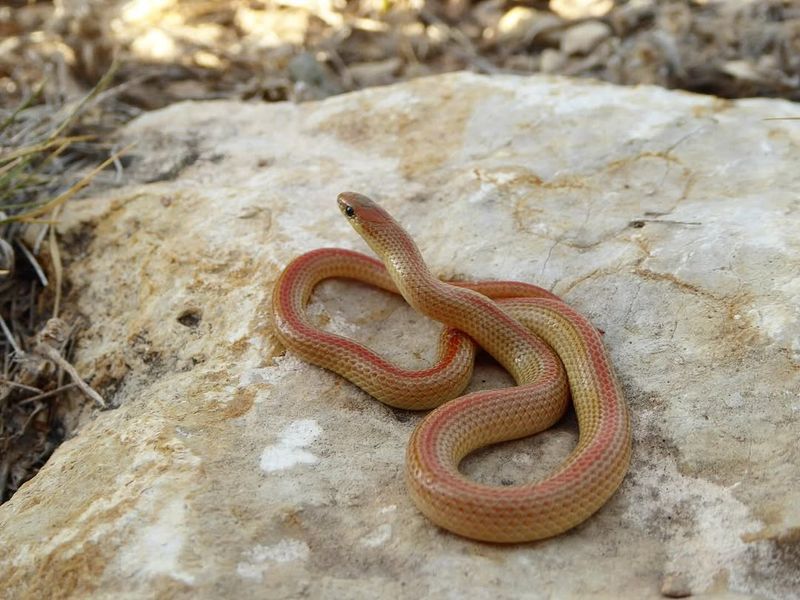
The Western Ground Snake, with its vibrant patterns and petite stature, is a true gem of the southwestern United States. Sporting bands of orange, black, and sometimes gray, this snake is a colorful addition to the rocky landscapes it calls home. Typically measuring between 8 to 12 inches, it is small enough to go unnoticed, yet bold enough to stand out when found.
Despite its vivid appearance, the Western Ground Snake is non-venomous and completely harmless to humans. It spends much of its life hidden away under rocks or burrowed in sandy soils, emerging at night to hunt for insects and small spiders. This nocturnal lifestyle adds an air of mystery, a hidden spectacle for those who venture into the desert under the cloak of darkness.
The Western Ground Snake’s adaptability is astonishing, thriving in environments ranging from arid deserts to lush grasslands. Its presence is a testament to the resilience and diversity of life in the harshest of climates, a reminder that beauty often thrives in unexpected places.
5. Flathead Snake
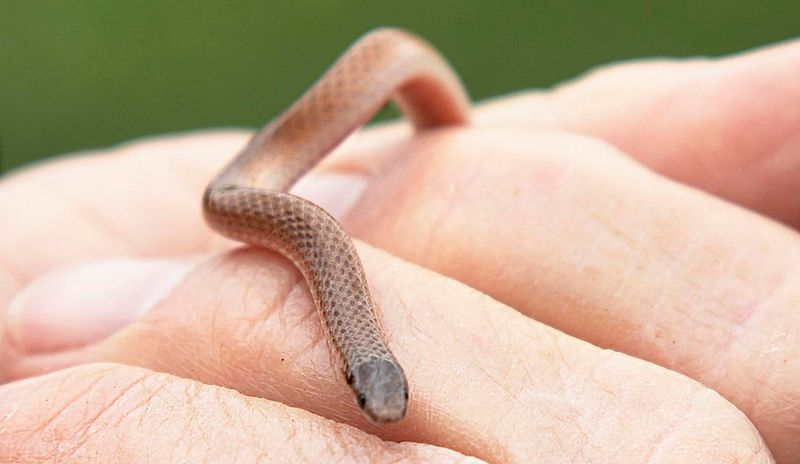
With its flat, wedge-shaped head and slender, grayish-brown body, the Flathead Snake is an enigmatic resident of the central United States. Its name aptly describes its most distinctive feature, a characteristic that aids in its burrowing lifestyle. Averaging a length of just 7 to 8 inches, it is one of the smallest and most secretive snakes in its range.
The Flathead Snake leads a reclusive life, largely staying hidden beneath rocks or within leaf litter. This snake is fossorial, meaning it spends much of its existence underground or within the topsoil, searching for soft-bodied prey like insects and larvae. Its small size and secretive nature make it a rarely seen marvel, often overlooked in the grand tapestry of wildlife.
Despite its diminutive size, the Flathead Snake plays a crucial role in controlling insect populations, contributing to the ecological balance within its habitat. Spotting this elusive creature is akin to uncovering a little-known mystery, a hidden piece of the natural world waiting to be discovered by those with a watchful eye.
6. Rough Earth Snake
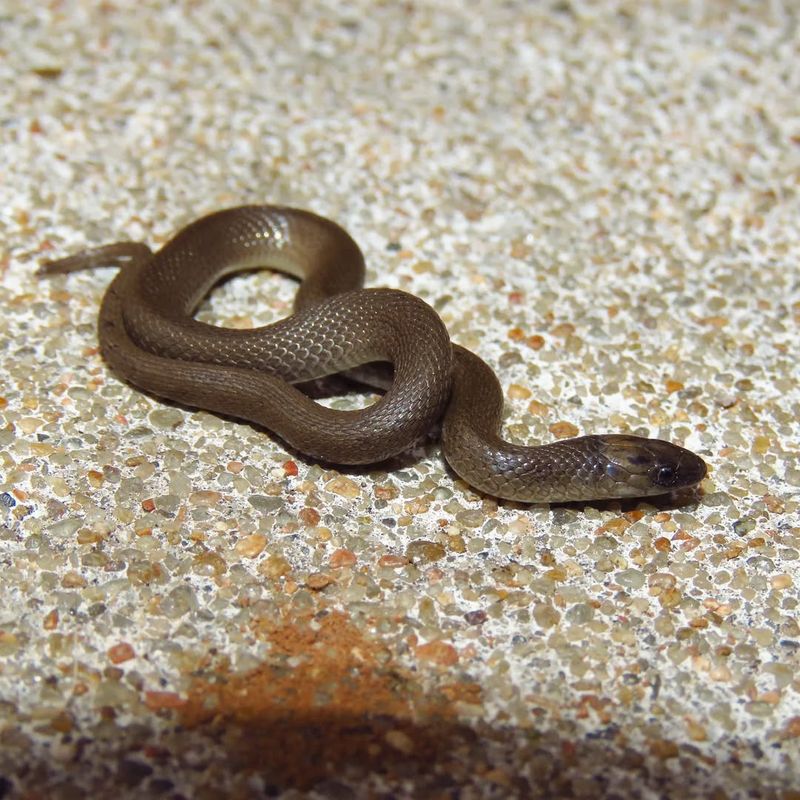
The Rough Earth Snake is a master of disguise, blending seamlessly into the forest floor with its rough, brown scales and slender form. Averaging lengths of 7 to 10 inches, this snake is often mistaken for a twig or fallen leaf, a testament to its incredible camouflage skills.
These snakes are found across the southeastern United States, where they inhabit moist, wooded areas rich in leaf litter. Their preference for such environments is linked to their diet, which primarily consists of earthworms and insect larvae. The Rough Earth Snake’s lifestyle is one of quiet existence, rarely venturing out into the open, maintaining an aura of mystery.
Despite their elusive nature, these snakes play an important role in their ecosystems, helping to control pest populations and contributing to the health of their forest habitats. For those fortunate enough to spot one, the Rough Earth Snake offers a glimpse into the hidden world of the forest floor, a reminder of the intricate interplay of life beneath the leaves.
7. Ring-necked Snake
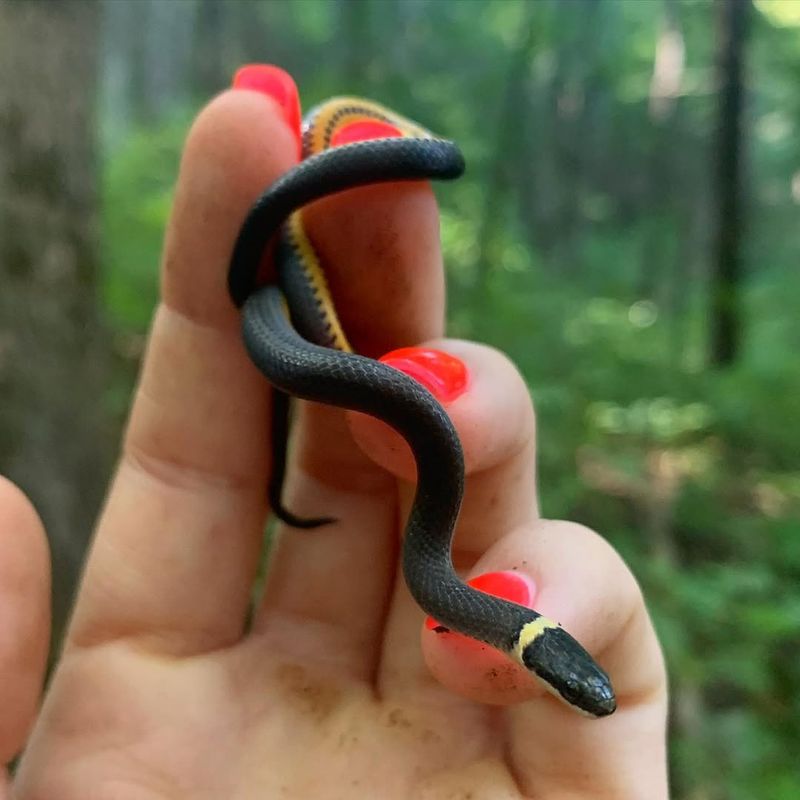
The Ring-necked Snake is a charismatic little reptile, easily identifiable by the vivid orange or yellow ring encircling its neck. These snakes, typically measuring between 10 to 15 inches, are a captivating sight for any passerby lucky enough to encounter them. Their dark, glossy bodies contrast beautifully with the bright ring and the underside of their tails, which sometimes displays flashes of red or orange when threatened.
Despite their striking appearance, Ring-necked Snakes are gentle and non-venomous. They inhabit a variety of environments across the United States, from moist forests to arid deserts, showcasing their remarkable adaptability. These snakes are primarily nocturnal, preferring the cover of darkness to hunt for their favorite prey: insects, amphibians, and small reptiles.
Their secretive nature and stunning appearance make them a favorite among snake enthusiasts and naturalists. The Ring-necked Snake’s presence is a delightful surprise, a vibrant splash of color in the natural world that captivates the imagination and enriches the tapestry of life with its charming demeanor.
8. Brahminy Blindsnake
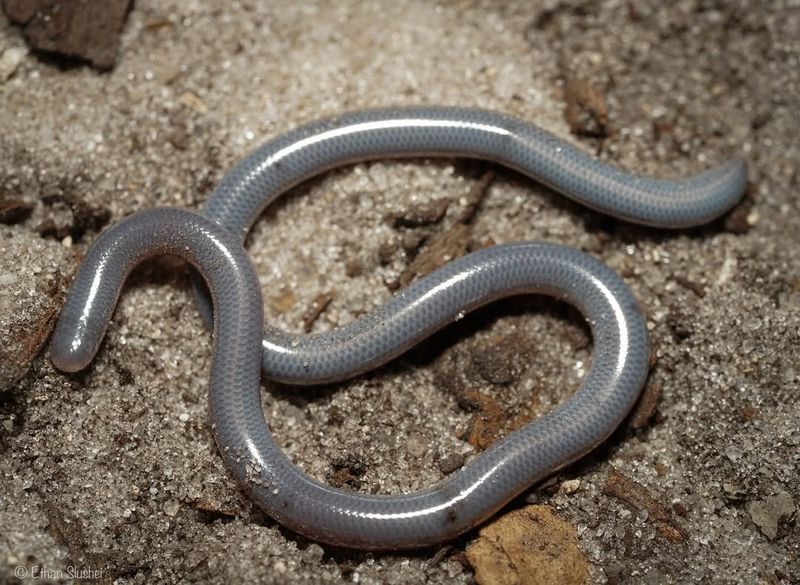
Known as the “Flowerpot Snake,” the Brahminy Blindsnake is a tiny globetrotter, often found far from its native grounds in Southeast Asia. Averaging a mere 2 to 6 inches in length, this snake is one of the smallest and most widely distributed species worldwide, thanks to its propensity for hitching rides in potted plants.
Its shiny, dark body resembles that of an earthworm, making it easy to overlook in garden soils. These snakes are blind, relying on their keen sense of smell to navigate their environment and locate prey, which primarily consists of ants and termites.
Their presence in the U.S. is largely due to accidental introductions through the horticultural trade, yet they have established populations in warmer climates across the country.
Despite their diminutive size, Brahminy Blindsnakes play a role in controlling pest populations, subtly influencing the ecosystems they inhabit. Discovering one in your garden is uncovering a tiny traveler, a minuscule marvel of nature quietly going about its life amid the roots and soil.
9. Red-bellied Snake
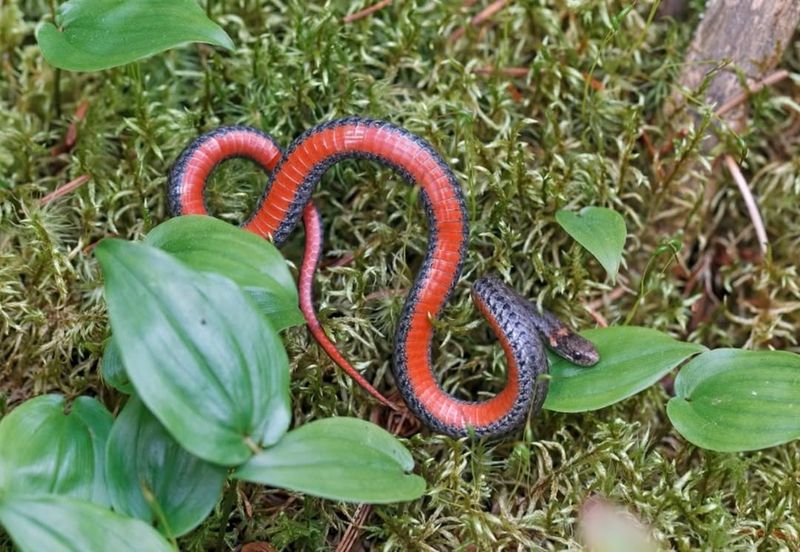
The Red-bellied Snake, with its strikingly vivid underside, is one of nature’s best-kept secrets, gracing the forests of North America with its presence. Averaging a length of 8 to 10 inches, these snakes are a visual delight, easily identified by their reddish belly, which contrasts sharply with their otherwise subdued upper body colors of brown or gray.
These snakes prefer moist environments, often found under logs or leaf litter, where they feast on slugs, worms, and other small invertebrates. Their small size and secretive nature often keep them hidden from view, adding to the allure and mystique surrounding these vibrant creatures.
The Red-bellied Snake is non-venomous and poses no threat to humans, making it a charming and harmless addition to its woodland habitat. Encountering one is a small thrill, akin to finding a hidden gem among the forest floor, a splash of color that enriches the diverse tapestry of life.
Their presence is a reminder of the subtle beauty that exists in the world, often obscured but always there for those willing to look closely.
10. Plains Black-headed Snake
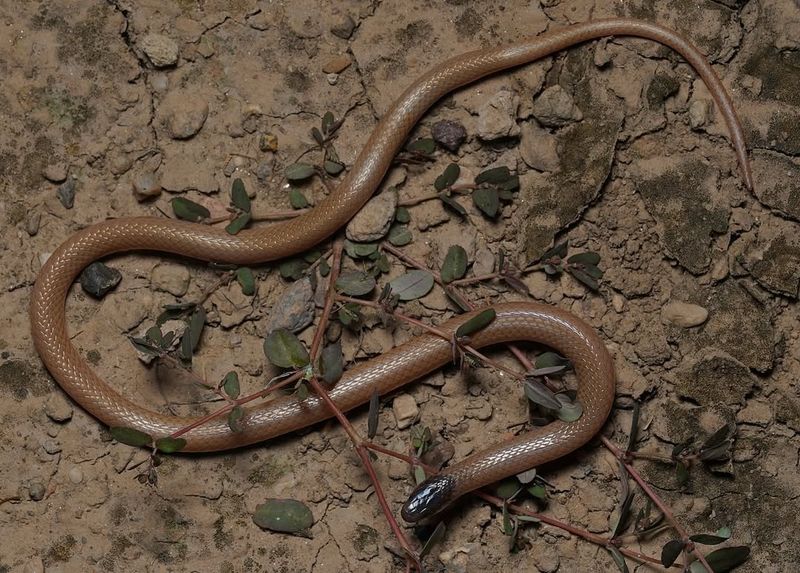
The Plains Black-headed Snake, with its distinctive black head set against a tan body, is a true spectacle of the North American grasslands. These petite serpents typically measure about 8 to 12 inches in length, but their striking appearance ensures they never blend into the background completely.
These snakes are often found in open, grassy areas or rocky outcrops, where they lead a largely hidden existence, feeding on insects, spiders, and eggs. Their unique coloring serves as an effective camouflage against predators, allowing them to thrive in their natural habitat with minimal disturbance.
Despite their small size, Plains Black-headed Snakes are an integral part of the ecosystem, contributing to the balance of insect populations in the grasslands. Observing one in its natural environment is an enchanting experience, a testament to the richness and diversity of life that flourishes in the vast, open spaces of North America. These snakes are a reminder of the intricate beauty and complexity of nature, often overlooked but always present, waiting to be discovered.
11. Midland Brown Snake
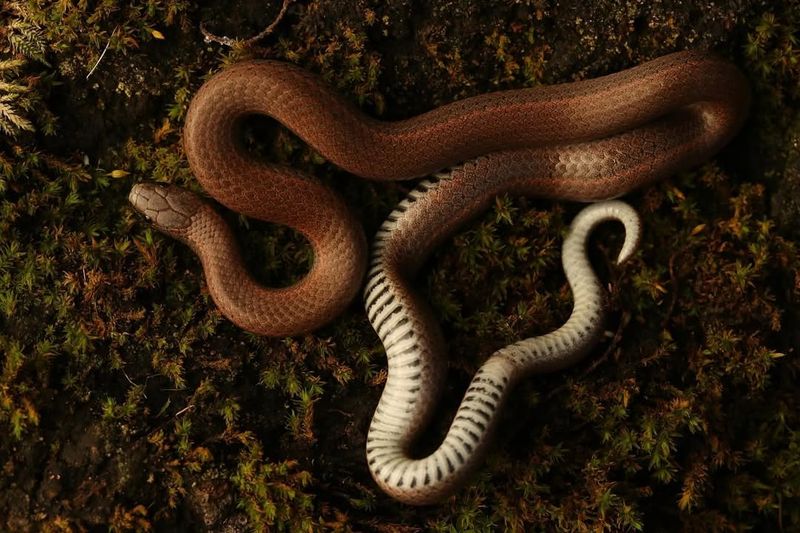
The Midland Brown Snake, with its understated elegance, is a master of hiding in plain sight. This small snake, typically measuring 9 to 13 inches, is characterized by its light brown color and the distinctive lighter stripe running down its back, blending seamlessly with the forest floor.
Preferring environments rich in leaf litter and moisture, these snakes are often found under logs or within piles of debris, where they hunt for their favorite prey: slugs, earthworms, and soft-bodied insects. Their secretive nature and excellent camouflage often keep them hidden from predators and human eyes alike.
Non-venomous and gentle, the Midland Brown Snake is a subtle yet essential component of its ecosystem, contributing to the control of insect populations and the health of the soil.
Spotting one is a delightful challenge, a small triumph of observation that rewards the attentive naturalist with a glimpse into the intricacies of nature. This snake, often overlooked, is a reminder of the unseen wonders that thrive quietly at our feet, enriching the natural world with their presence.


